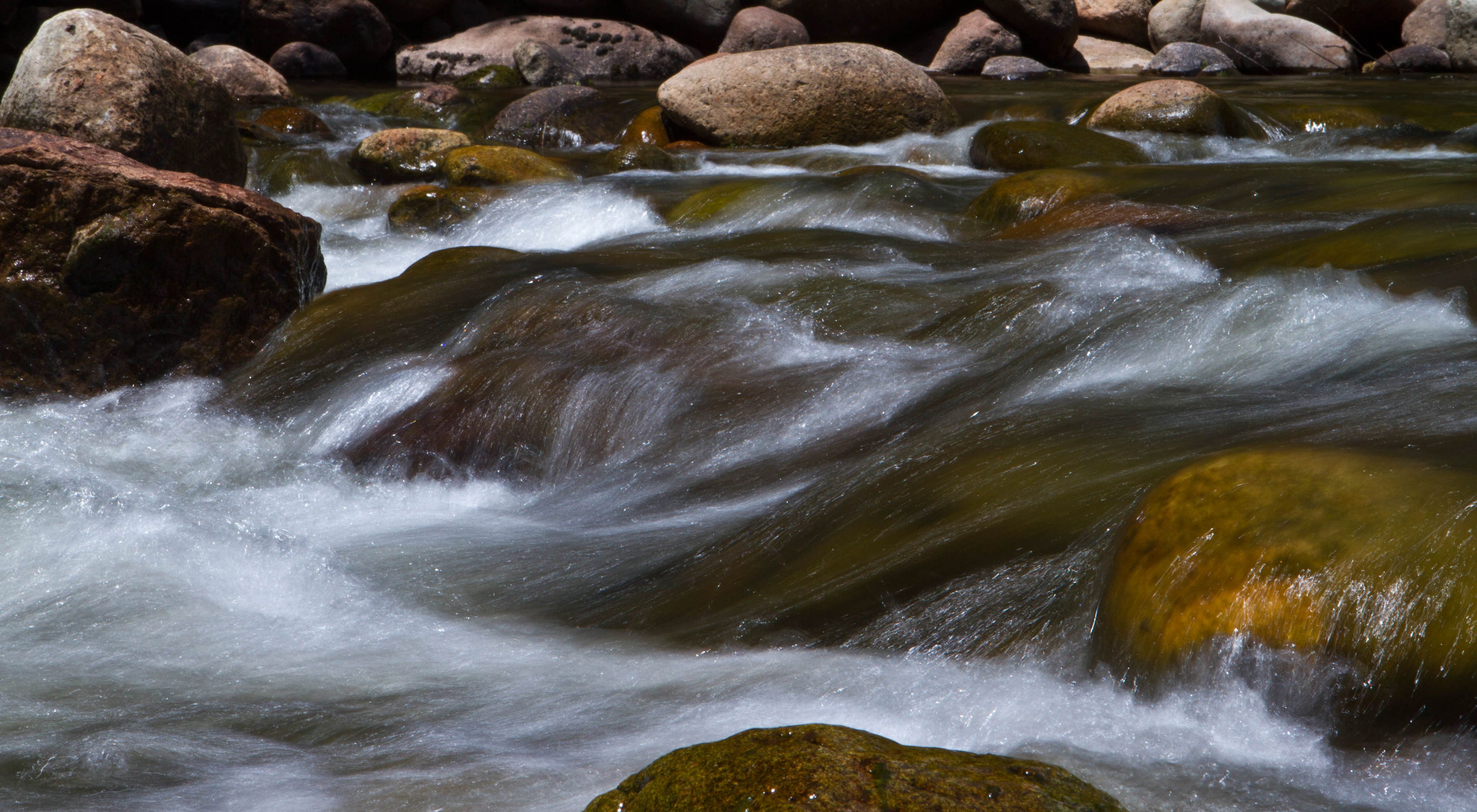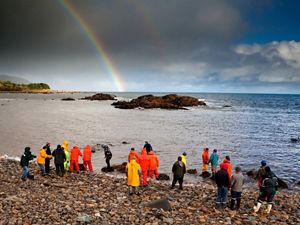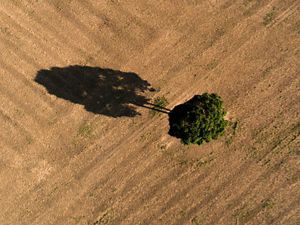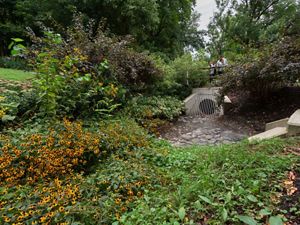Latin America
Creating Water Funds for People and Nature. Water funds help to provide fresh water today and into the future.
Quote: Alejandro Calvache
We're learning to assess water according to a monetary value for the services it provides.

If petroleum is black gold and refined sugar is white gold, could crystal-clear fresh water be gold’s newest look?
Global warming, deforestation, pollution and other environmental pressures are shrinking the planet’s clean water supply, making people look at fresh water as they never have before: as a valuable good that is produced, sold and consumed and deserves our investment.
The Nature Conservancy is revolutionizing this approach by launching water funds across Latin America that pay for watershed protection and reforestation — thereby helping to provide fresh water today and into the future.
The Conservancy’s and its partners growing portfolio of Water Funds now includes 32 Water Funds initiatives in various stages of development, which provide a steady source of funding for the conservation of more than 7 million acres of watersheds and secure drinking water for nearly 50 million people.
“People are really starting to appreciate water — not just figuratively, but literally,” says Alejandro Calvache, a water funds specialist for the Conservancy. “We’re learning to assess water according to a monetary value for the services it provides.”
How Do Water Funds Work?
Water users pay into the funds in exchange for the product they receive — fresh, clean water. The funds, in turn, pay for forest conservation along rivers, streams and lakes, to ensure that safe drinking water flows out of users’ faucets every time they turn on the tap.
Some Water Funds pay for community-wide reforestation projects in villages upstream from major urban centers, like Quito, Ecuador, and Bogotá, Colombia. In other cases, like in Brazil’s Atlantic Forest, municipalities collect fees from water users and make direct payments to farmers and ranchers who protect and restore riverside forests on their land through water producer initiatives.
“These ‘water producers,’ as we call them, are being fairly compensated for a product they’re providing to people downstream in Rio de Janeiro and São Paulo: fresh water,” explains Fernando Veiga, Fernando Veiga, Environmental Services Manager for the Conservancy’s Atlantic Forest and Central Savannas Conservation Program in Brazil. “They’re receiving $32 per acre, per year, for keeping their riverside forests standing.”
The Water Producer concept was first developed by Brazil's National Water Agency (ANA), which has been partnering with the Conservancy in the implementation of the projects across Brazil.
And such Water Funds and Water Producer initiatives are paying for reforestation all across Latin America:
- Valle del Cauca, Colombia
The Cauca Valley Water Fund protects Andean forests and grasslands, and helps to preserve freshwater resources for more than 1,2 millon residents in five towns. The Fund was established through a multi-sector partnership that involved private businesses, environmental authorities, NGOs, grassroots groups and local government.
This project is expecting to invest $16 million in conservation activities within the project area, including watershed protection, environmental education, reforestation, and eco-friendly cattle ranching.
- Quito, Ecuador
The Quito Water Fund, also known as FONAG, protects watersheds supplying the capital’s 2 million people with 80 percent of their freshwater. Though the Conservancy invested a mere $20,000 when the project began in 2000, monthly contributions from Quito’s water and electric companies now produce nearly $1 million each year in disbursements for conservation projects in the watersheds that supply the city. FONAG has served as a model for other water fund projects the Conservancy is establishing across the region.
Link: www.fonag.org.ec/inicio/
- Bogotá, Colombia
Launched in April 2008, the Bogotá Water Fund is financing conservation of tropical Andean forests. These forests line watersheds that supply 8,5 million people in Bogotá with their drinking water. Meanwhile, the city’s water treatment facility could save up to $4 million every year because trees will be doing a large portion of their filtering work for them.
Link: www.aguasomos.org
- Cuenca, Ecuador
The Conservancy worked with local partners and government to launch a Water Fund in Cuenca, Ecuador’s third-largest city, in October 2008. The Fund is financing conservation of the Paute watershed, which supplies more than 500,000 Cuenca residents and 300,000 Azogues residents with drinking water and half the country with electricity through the local hydroelectric dam.
The fund will also pay for the protection and restoration of habitats critical to the survival of Andean tapirs.
Link: www.aguasomos.org
- Rio de Janeiro state, Brazil
The Guandu Watershed is a vital source of drinking water for 8 million people in the city of Rio de Janeiro, but deforestation by farmers and ranchers have reduced water quality and quantity. Now, through the Guandu Water Producer Project launched in November 2008, fees collected from water users will pay 121 farmers and ranchers to leave standing riparian forests on their lands. The project will help preserve and restore Brazil’s Atlantic Forest for birds and primates found nowhere else in the world.
- Lima, Peru
The Conservancy is working with local partners in Peru to implement the Water Fund financing conservation projects in the Rimac, Chillón and Lurín watersheds, where glaciers are melting at increasing rates because of global climate change.
This fund is contributing to preserve priority sites in the Sechura Desert ecoregion and improving the quality of life in local communities. It will also help guarantee the availability and quality of fresh water that is essential to the health of the city’s 8 million inhabitants.
Link: www.aquafondo.org.pe
- Tungurahua, Ecuador
The Tungurahua Water Fund supports the conservation of watersheds in the Chimborazo National Park and surrounding buffer zones through activities such as reforestation and alternative income generation projects that provide a sustainable source of income for local communities and ensure protection of natural habitats. By protecting 1.3 million acres of Andean forests and grasslands, the Tungurahua Water Fund contributes to the conservation of forests that provide water for 350,000 local residents.
Link: www.fondotungurahua.org.
- Sao Paulo, Brazil
Half of São Paulo’s population — roughly 9 million people — drink water from the Cantareira Water System in Brazil’s Atlantic Forest. The Cantareira is one of the world’s largest water systems, but deforestation from farming, ranching and logging upstream has caused water quality and quantity to drop in recent years.
To help fix the problem, the Conservancy supports Brazil’s first Water Producer Program, through which the Extrema municipality in the Piracicaba watershed directs funds collected from water users to pay farmers and ranchers who protect or restore riparian forests on their lands. Landowners are earning about $28 per acre per year for the water their forests are producing and filtering.
- Espiritu Santo, Brazil
Espirito Santo State PES Program is grounded in the State legislation that created the State Water Fund (FUNDAGUA). The fund is based on oil and gas royalties among other finantial sources and invests in conservation and restoration of native forests, supoports the implementation of biodiversity friendly land uses and offers payments for environmental services to landowner that engage in the program. Up to date 407 landowners are engaged to conserve 1,500 acres, recieving around $850,000 in PES.
- Camboriu, Brazil
The Camboriu Water Fund is stuctured upon the local water company iniciative that invests in green infrastructure in order to reduce its water treatment costs. The constitution of a municipal water fund is under design to guarantee the long term financial sustainability of the project. Engagement process just starts to raise, while untill the moment 7 landowners are already engaged, to whom $7,000 have been payed for the conservation and restoration of 37 acres.
- Chiapas, Mexico
The Chiapas Water Fund is protecting freshwater sources through the conservation and sustainable growth in the basins of the Upper Grijalva, Sierra Madre and Chiapas Coast. The Fund will promote actions that contribute to reducing the impact of landslides and floods in rural and urban communities, helping to protect the safety and well beign of thousands of people. Also to diminish the sedimentation of Grijalva Hidroelectric System´s damns, the most important in Mexico.
- Zamora, Ecuador
The PROCUENCAS water fund is supporting conservation projects in southern Ecuador’s Podocarpus National Park, a massive cloud forest home to 600 species of birds as well as large Andean mammals like cats, tapirs and spectacled bears. Conservation projects will ensure 25,000 citizens in Zamora continue to enjoy their supply of clean, abundant fresh water from one of Ecuador’s most remarkable protected areas.



